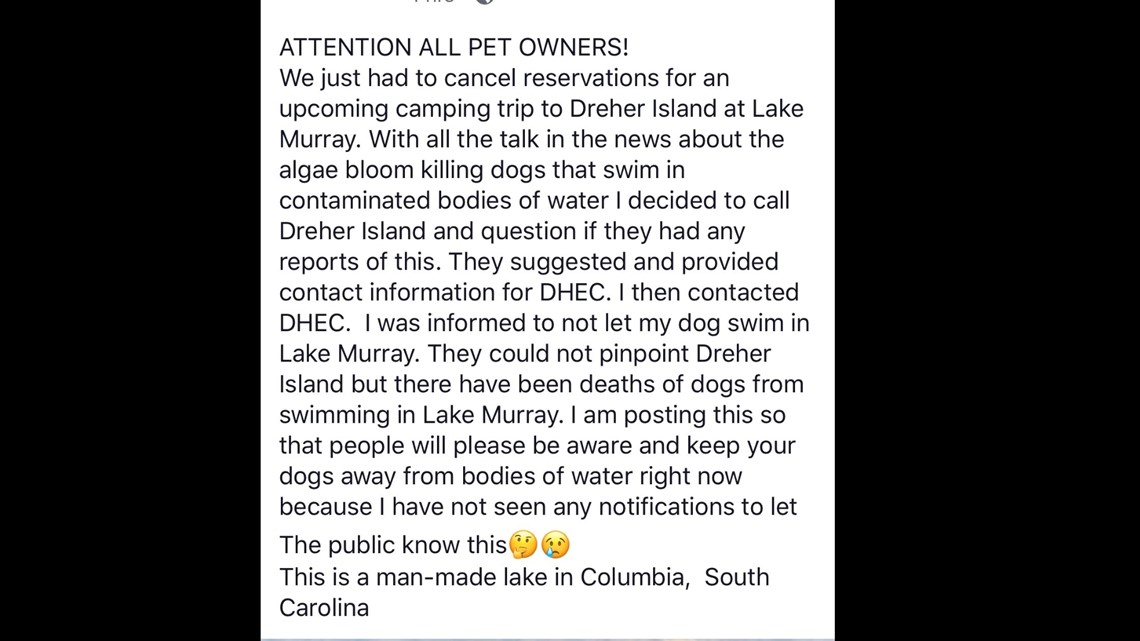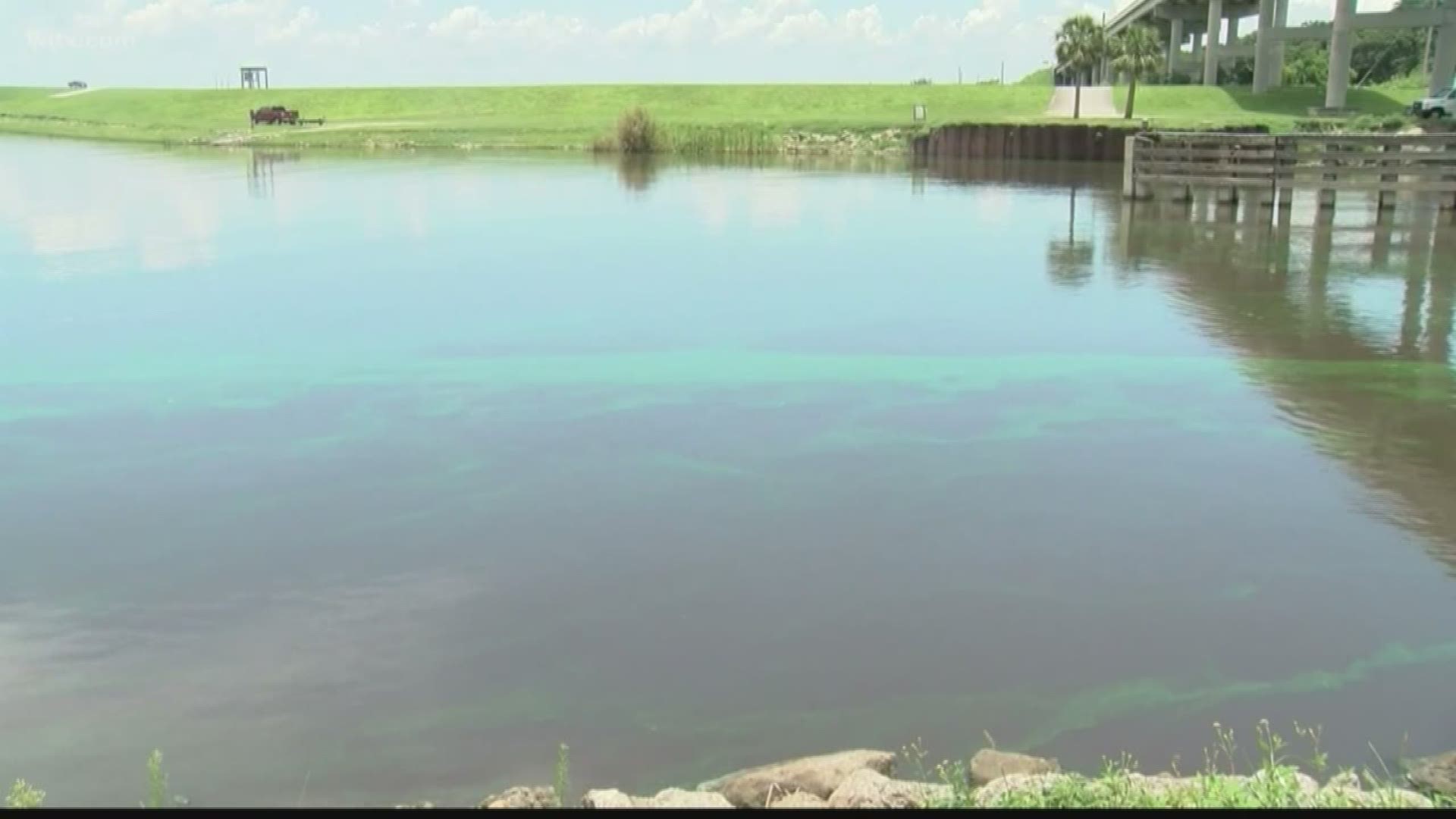COLUMBIA, S.C. — Blue green algae in bodies of water can be toxic to your pet, but DHEC has not issued a swimming advisory for Lake Murray.
After a story about dogs passing away after encountering toxic algae, there has been confusion about whether or not it is safe to bring your pet to certain South Carolina bodies of water.
A Facebook post Wednesday morning received over 2,500 shares after a woman said she spoke with someone at the South Carolina Department of Health and Environmental Control who said she shouldn’t bring her dog out on Lake Murray.
WLTX Street Squad reached out to DHEC and received a statement.
“DHEC has not issued a swimming advisory for Lake Murray, and, to our knowledge, a DHEC staff person has not advised that dogs not enter Lake Murray,” Laura Renwick, media relations for DHEC said.
Renwick also said, “algae blooms can be very fast growing and become an issue before the Department has been made aware of them.”


Though they have not released any official warnings about Lake Murray, pet-owners and swimmers are encouraged to always take precautions when visiting bodies of water because there is always potential risk.
Here are some facts about this toxic algae:
- it can bloom in fresh and marine water
- it can be found in multiple bodies of water
- it looks like a foam, scum, or mat
- it can be different colors and appear to be floating on water
- it often smells
DHEC shared that "the only known hazardous algae bloom currently affecting waters monitored by DHEC from a recreational swimming concern is a bloom of Lyngbya on Lake Wateree in Fairfield County. The toxin that’s produced by this bloom has been associated with swimmer's itch/rash. It’s not recommended for people or pets to swim in or near these algal mats."
Here is the full statement from DHEC provided to WLTX:
"DHEC has not issued a swimming advisory for Lake Murray, and, to our knowledge, a DHEC staff person has not advised that dogs not enter Lake Murray.
It’s always recommended that individuals evaluate a waterbody before entering in it. If a waterbody looks discolored, has a foul odor, noticeable algal mats, or dead fish or other animals, it’s advisable to not enter the water or allow pets or animals near that water. Algae blooms can be very fast growing and become an issue before the Department has been made aware of them.
For background information about blue-green algae:
DHEC tests ambient water quality, including lakes and rivers, on a monthly basis year-round. Statewide water sampling stations are available on our S.C. Watershed Atlas. (Ocean-facing beaches are tested weekly from May 1 to Oct. 1.)
South Carolina lakes, rivers, streams and coast are great places to cool off, but there is always a potential risk when swimming in natural water bodies. Natural waters are not sterile environments, and the presence of harmful bacteria, viruses and other organisms that can cause illness is always a possibility.
The only known hazardous algae bloom (HAB) currently affecting waters monitored by DHEC from a recreational swimming concern is a bloom of Lyngbya on Lake Wateree in Fairfield County. The toxin that’s produced by this bloom has been associated with swimmer's itch/rash. This algae produces a mat of material on the bottom of the lake that can float to the surface, and it’s been found to be thickest in the shallower coves of the lake. It’s not recommended for people or pets to swim in or near these algal mats.
From July-November 2018 and resuming in May of this year, DHEC has monitored its ambient lake stations for microcystin and cylindrospermopsin, which are types of toxins produced by certain freshwater blue-green algae. The EPA recommendation for issuing a swimming advisory for these toxins is 8 micrograms per liter (ug/l) for microcystin and 15 ug/l for cylindrospermopsin. While detections of the toxins have been recorded, and expected, no results have been elevated enough to require a public swimming advisory. The majority of the results have been less than 0.5 ug/l for microcystins.
In investigating water bodies that were reported to DHEC outside of the Department’s routine monitoring, none of those results approached the EPA’s recommended levels for these toxins either.
If you or your pets encounter waters that possibly contain a HAB, immediately rinse with tap water and try to not let pets lick themselves before they're rinsed off. Seek immediate medical attention if illness occurs, for humans or pets."

